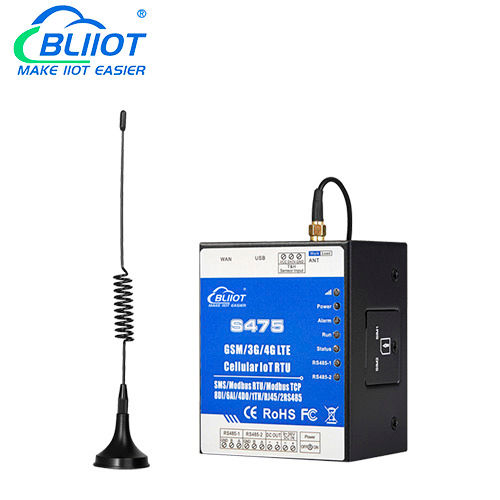Are you ready to revolutionize how you manage and maintain your Internet of Things (IoT) devices? The future of IoT management is here, offering unparalleled accessibility and control from anywhere in the world, transforming the way businesses operate.
The modern landscape of technology is awash in an ever-expanding sea of connected devices. From smart home appliances to sophisticated industrial machinery, the Internet of Things (IoT) is reshaping how we live and work. But with this proliferation of devices comes a significant challenge: effective management. The traditional methods of device maintenanceon-site visits, manual updates, and reactive troubleshootingare becoming increasingly inefficient and costly. This is where remote IoT device management steps in, offering a streamlined, cost-effective, and proactive approach to managing your connected devices.
Consider the implications: truck rolls, easily costing upwards of $150 each, can quickly inflate IoT management expenses into the hundreds of thousands of dollars per year, particularly for even moderately sized deployments. And what about the inevitable downtime? When devices experience unplanned outages, the vital business operations and processes they support can grind to a halt, leading to lost productivity, revenue, and customer satisfaction. Furthermore, The growth of sensors and devices also increases the need for remote control features to manage devices from a remote location.
One of the core benefits of remote IoT device management is the ability to monitor device status and health remotely. This includes monitoring CPU usage, memory consumption, network activity, and even the health of the SD card. With these insights, administrators can proactively identify and address potential issues before they escalate into major problems. Remote monitoring also enables the implementation of automated alerts, allowing teams to respond quickly to anomalies and minimize downtime. The modern approach also includes the ability to remotely ssh to IoT devices, even those behind firewalls or NAT routers, opening the door to sophisticated troubleshooting and management capabilities.
Another crucial aspect of remote IoT device management is the ability to remotely control and configure devices. This feature allows you to remotely execute commands, update software, and manage configurations from a central location. The days of physically traveling to a device to perform updates are over. Instead, you can deploy updates and configuration changes across your entire fleet of devices with a few clicks. And a complete overview of all your IoT devices in one single dashboard becomes a reality, providing a consolidated view of your entire device ecosystem.
Remote access also simplifies many maintenance tasks. Instead of having to be right there in person to fix, update, or even check on a device, remote access lets folks do it from wherever they are. For example, imagine a scenario where an issue is detected on a device. With remote management capabilities, the team could be anywhere and still resolve the issue.
The benefits extend to cost savings, too. By eliminating the need for on-site visits and minimizing downtime, remote IoT device management significantly reduces operational expenses. Also, by gaining access at flexible and simple prices that make you save money, business owners are able to allocate their resources to more innovative areas. The goal is to provide access to solutions without hidden costs and additional charges. With no surprises, no hidden costs and no additional charges, our shared IoT data packages are the most affordable solution for your business. Consider the pricing structures. Some services offer a free tier, perhaps including a limited number of remote actions per month, providing a risk-free entry point. Other platforms offer flexible pricing models where you simply pay for the resources you consume, allowing you to scale up or down as your needs change.
The benefits of these systems extend beyond the operational efficiencies and cost savings. Remote IoT device management provides enhanced security, better data insights, and improved scalability. It offers more complete control and a better user experience.
For those diving into the world of Raspberry Pi and exploring its potential for remote IoT applications, you're in the right place. These small, affordable computers are perfect for IoT projects, but managing them across a network can be tricky. Remote management tools provide the necessary control to fully leverage the Raspberry Pi's capabilities.
The core components of a modern remote IoT device management platform include the following:
- Remote Access: Securely connect to devices behind firewalls and NAT routers for troubleshooting and configuration.
- Monitoring: Track device health, resource usage, and key performance indicators (KPIs) in real-time.
- Management: Remotely update software, configure settings, and execute commands on devices.
- Security: Implement robust security measures to protect devices and data from unauthorized access.
- Automation: Automate tasks and workflows to streamline operations and reduce manual effort.
The market offers a variety of options. TeamViewer IoT offers a secure remote monitoring and management tool for IoT devices with a great interface and a scripting interface for process automation. Rockremote offers a reliable and flexible communications solution for remote industrial and utilities IoT applications. There are also open-source options like the open source IoT device management platform for manufacturers and system integrators, which includes auto provisioning and white labeling.
The following table highlights some key features and functionalities that distinguish a robust remote IoT device management platform:
| Feature | Description | Benefit |
|---|---|---|
| Remote Access | Securely connect to devices via SSH, web interfaces, or custom protocols. | Troubleshoot issues, configure settings, and perform maintenance from anywhere. |
| Monitoring | Real-time monitoring of device health, resource usage (CPU, memory, storage), and network activity. | Proactive identification of issues, performance optimization, and early warning of potential failures. |
| Alerting | Configurable alerts based on predefined thresholds or custom events. | Immediate notification of critical events, enabling rapid response and minimizing downtime. |
| Firmware Updates | Remotely update device firmware over the air (OTA). | Ensure devices have the latest features, security patches, and bug fixes. |
| Configuration Management | Remotely configure device settings and apply configuration profiles. | Consistency across devices, simplified deployments, and streamlined configuration updates. |
| Batch Jobs | Execute scripts or commands on multiple devices simultaneously. | Automate routine tasks, such as software updates, data collection, or system maintenance. |
| Security | Secure communication protocols, user authentication, and access controls. | Protect devices and data from unauthorized access and cyber threats. |
| Integration | Integration with other systems, such as cloud platforms, databases, and APIs. | Enable data synchronization, enhance automation, and expand functionality. |
Beyond these core features, a comprehensive remote IoT device management platform also addresses key aspects such as device provisioning, security, and over-the-air (OTA) updates.
- Device Provisioning: Simplifies the process of enrolling new devices into the management system, often using automated processes to configure devices quickly and efficiently.
- Security: Offers robust security features, including secure communication protocols, user authentication, access controls, and data encryption to protect devices and data from unauthorized access and cyber threats.
- OTA Updates: Enables remote, over-the-air (OTA) firmware and software updates, ensuring devices have the latest features, security patches, and bug fixes without the need for physical access.
For those seeking to deploy IoT applications, several factors must be considered. The choice of a suitable remote IoT device management platform will be driven by specific needs, including the type of devices used, the scope of deployment, security requirements, and the budget available.
The journey into remote IoT device management can be complex, with various elements needing consideration. Choose a plan that meets your need. Take advantage of the AWS free tier. Combine remote control functionalities with monitoring capabilities.


